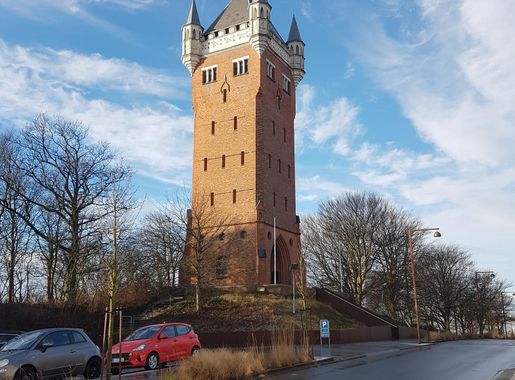
Esbjerg: Denmark's Coastal Gem
Discover Esbjerg: A coastal city in Denmark known for its maritime heritage, stunning sculptures, and vibrant downtown, offering something for every traveler.
Esbjerg is a charming city on the west coast of Denmark. Known for its bustling port, it offers a unique blend of maritime heritage and modern attractions. Visitors can explore the impressive Man Meets the Sea sculptures, which are iconic landmarks of the city. The city is home to several museums, including the Fisheries and Maritime Museum, where you can learn about the region's rich fishing history. Esbjerg also boasts beautiful beaches and nature reserves, perfect for outdoor enthusiasts. The Wadden Sea National Park, a UNESCO World Heritage site, is a must-visit for bird watchers and nature lovers. Downtown Esbjerg is vibrant with shops, cafes, and restaurants. You can enjoy fresh seafood dishes at local eateries or take a stroll along the city's pedestrian streets. The Water Tower offers stunning views of the city and the North Sea, making it a popular spot for tourists. Esbjerg is also a gateway to the nearby island of Fanø, just a short ferry ride away. Fanø offers scenic landscapes, charming villages, and plenty of opportunities for cycling and beachcombing. Whether you're interested in culture, nature, or relaxation, Esbjerg has something to offer every traveler.
Local tips in Esbjerg
- Visit the Man Meets the Sea sculptures at sunset for a breathtaking view.
- Take a ferry to the island of Fanø for a day trip filled with cycling and beachcombing.
- Explore the Fisheries and Maritime Museum to learn about Esbjerg's fishing history.
- Climb the Water Tower for panoramic views of the city and the North Sea.
- Try local seafood dishes at restaurants in the city center.
- Visit the Wadden Sea National Park for bird watching and nature walks.
Esbjerg: Denmark's Coastal Gem
Esbjerg is a charming city on the west coast of Denmark. Known for its bustling port, it offers a unique blend of maritime heritage and modern attractions. Visitors can explore the impressive Man Meets the Sea sculptures, which are iconic landmarks of the city. The city is home to several museums, including the Fisheries and Maritime Museum, where you can learn about the region's rich fishing history. Esbjerg also boasts beautiful beaches and nature reserves, perfect for outdoor enthusiasts. The Wadden Sea National Park, a UNESCO World Heritage site, is a must-visit for bird watchers and nature lovers. Downtown Esbjerg is vibrant with shops, cafes, and restaurants. You can enjoy fresh seafood dishes at local eateries or take a stroll along the city's pedestrian streets. The Water Tower offers stunning views of the city and the North Sea, making it a popular spot for tourists. Esbjerg is also a gateway to the nearby island of Fanø, just a short ferry ride away. Fanø offers scenic landscapes, charming villages, and plenty of opportunities for cycling and beachcombing. Whether you're interested in culture, nature, or relaxation, Esbjerg has something to offer every traveler.
When is the best time to go to Esbjerg?
Unmissable attractions to see
Fiskeri- og Søfartsmuseet
Explore Aalborghus Castle – Aalborg’s evocative 16th-century royal residence and fortress blending Renaissance heritage with peaceful gardens along the Limfjord.
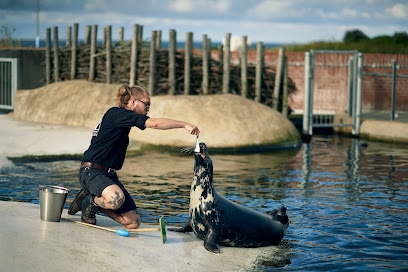
Dyrehaven
Discover Esbjerg Museum’s rich blend of local history, wartime secrets, and family-friendly Danish heritage in the heart of Denmark’s bustling west coast port.
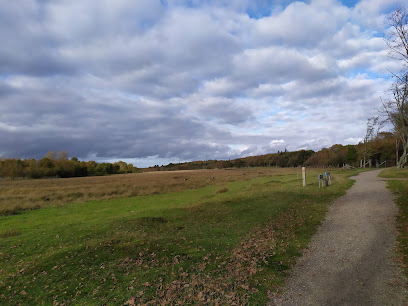
Christian IX statue, Esbjerg
A regal symbol at Esbjerg’s main square, the Christian IX Statue celebrates the city’s royal origins and serves as a key gathering point in Denmark’s vibrant west coast port.
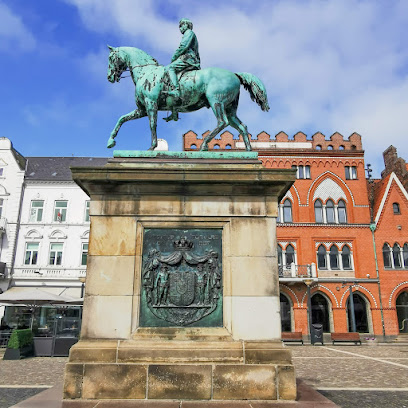
Tarp Bunkermuseum
Step into Esbjerg’s storied past, from amber treasures to everyday life, at this engaging museum located a short stroll from the city’s main square.
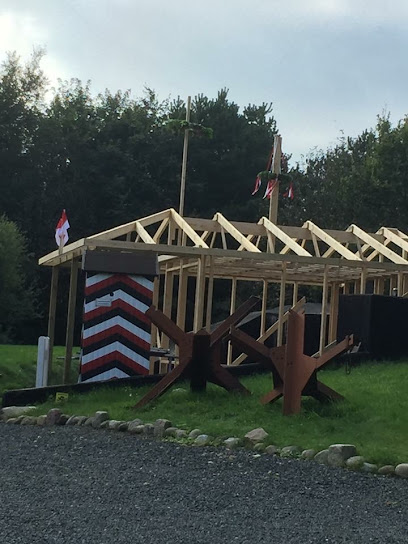
Esbjerg Museum
Discover Esbjerg Museum in Denmark’s lively port city, where immersive exhibitions and original artifacts reveal local history, wartime stories, and maritime culture.

Esbjerg Art Museum
Discover Esbjerg Museum’s vivid exhibitions, from maritime heritage and wartime history to hands-on children’s displays, in the cultural heart of West Jutland.

Esbjerg Havn
Discover Esbjerg's 27-meter mosaic celebrating the Wadden Sea's biodiversity, crafted by artist Lotte Lambæk and local community members.
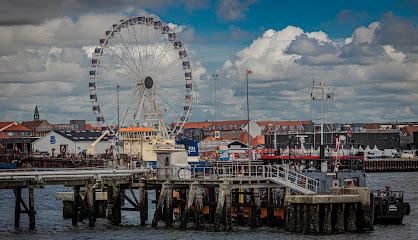
Guldager Mølledam
Discover the peaceful twin lakes of Brillesøerne, a beloved nature reserve in Esbjerg V, ideal for strolling, birdwatching, and escaping into the heart of Danish greenery.

Brillesøerne
Experience tranquil Danish lakeside scenery just beyond Esbjerg city, with winding trails, abundant birdlife, and peaceful wetland views at Brillesøerne Nature Preserve.
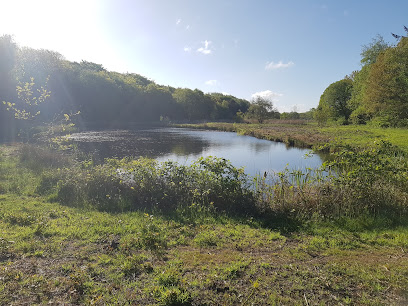
Fishermen memorial
Brillesøerne, the twin-lake nature reserve in Esbjerg V, offers idyllic trails, rich birdlife, and tranquil waters, making it a favorite oasis for locals and visitors alike.
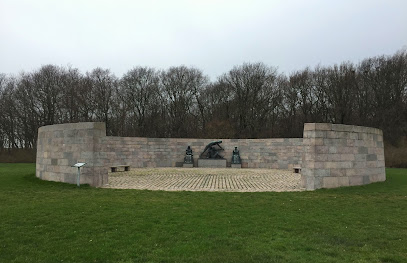
Iron Age Settlement
Discover Esbjerg’s transformation from tiny port to West Jutland’s modern maritime city through immersive exhibits, war history, and Denmark’s finest amber collection.

Museumsfyrskibet Horns Rev
Step into Esbjerg's rich maritime past and local life at this engaging city-center museum, featuring immersive street reconstructions, wartime exhibits, and Viking treasures.
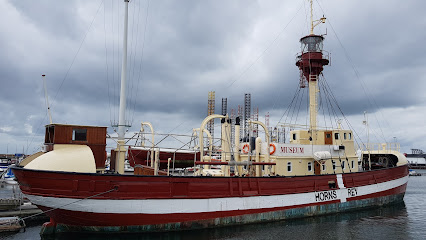
Fish Auction for tourists
Discover the tranquil beauty of Esbjerg's 'Spectacle Lakes,' a haven for nature lovers and families alike.
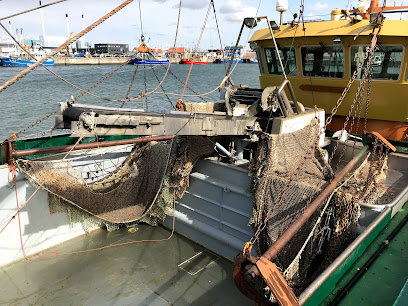
Sædding Mellem Fyr
Discover Esbjerg’s rich heritage, maritime past, and immersive local stories at this engaging museum in the city’s heart—a must-visit for culture and history lovers.
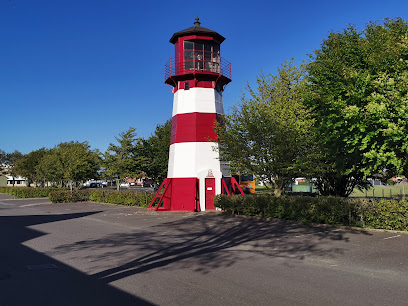
Skulptur “Frihedskæmpere”
Step into Esbjerg’s past at this hands-on city museum, featuring a recreated historic street, archaeological treasures, and stories of seafaring ambition.
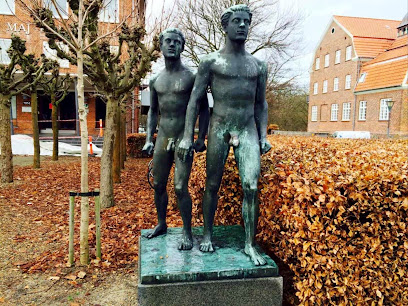
Markets, malls and hidden boutiques
BROEN Shopping
Discover BROEN Shopping, Esbjerg’s dynamic city-center mall—offering Danish and international brands, eateries, local events, and a lively glimpse of urban Danish life.
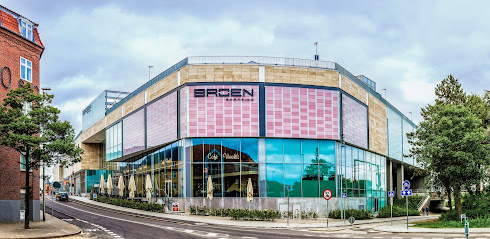
Victoria N Friends
Discover unique Danish fashion at Victoria N Friends, Esbjerg's premier boutique for contemporary apparel and accessories.
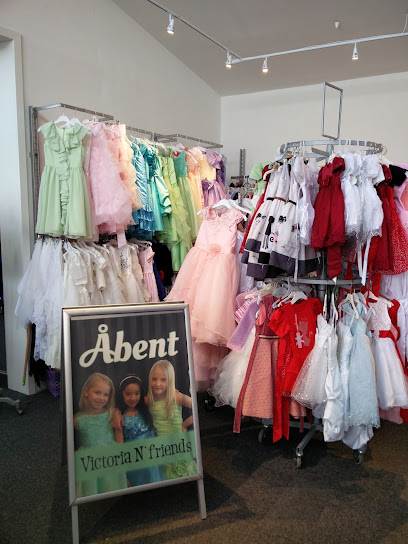
Local Phrases
-
- HelloHej
[hey] - GoodbyeFarvel
[far-vel] - YesJa
[ya] - NoNej
[nye] - Please/You're welcomeVær så god
[ver so go] - Thank youTak
[tak] - Excuse me/SorryUndskyld
[oon-skool] - How are you?Hvordan har du det?
[vor-dan har doo deh] - Fine. And you?Godt. Og dig?
[gut. oh di] - Do you speak English?Taler du engelsk?
[tah-ler doo eng-elsk] - I don't understandJeg forstår ikke
[yay for-stor ee-keh]
- HelloHej
-
- I'd like to see the menu, pleaseJeg vil gerne se menuen, tak
[yay vil gehrn seh menoo-en, tak] - I don't eat meatJeg spiser ikke kød
[yay spee-ser ee-keh koo-d] - Cheers!Skål!
[skol] - I would like to pay, pleaseJeg vil gerne betale, tak
[yay vil gehrn beh-tah-le, tak]
- I'd like to see the menu, pleaseJeg vil gerne se menuen, tak
-
- Help!Hjælp!
[hye-lp] - Go away!Gå væk!
[goh vehk] - Call the Police!Ring til politiet!
[ring teel po-lee-tee-et] - Call a doctor!Ring efter en læge!
[ring ef-ter en leh-eh] - I'm lostJeg er blevet væk
[yay air bleh-vet vehk] - I'm illJeg er syg
[yay air soog]
- Help!Hjælp!
-
- I'd like to buy...Jeg vil gerne købe...
[yay vil gehrn koo-beh] - I'm just lookingJeg kigger bare
[yay kee-ger beh-reh] - How much is it?Hvor meget koster det?
[vor mayt koh-stehr deh] - That's too expensiveDet er for dyrt
[deh air for deer-t] - Can you lower the price?Kan du sænke prisen?
[kan doo sern-keh prees-en]
- I'd like to buy...Jeg vil gerne købe...
-
- What time is it?Hvad er klokken?
[vad air kloh-ken] - It's one o'clockDen er et
[dehn air et] - Half past (10)Halv ti
[halv tee] - MorningMorgen
[mohr-gen] - AfternoonEftermiddag
[ef-ter-mee-dah] - EveningAften
[af-ten] - YesterdayI går
[ee gor] - TodayI dag
[ee day] - TomorrowI morgen
[ee mohr-gen] - 1En
[en] - 2To
[toh] - 3Tre
[treh] - 4Fire
[fee-reh] - 5Fem
[fem] - 6Seks
[seks] - 7Syv
[soov] - 8Otte
[oh-teh] - 9Ni
[nee] - 10Ti
[tee]
- What time is it?Hvad er klokken?
-
- Where's a/the...?Hvor er en/den...?
[vor air en/dehn] - What's the address?Hvad er adressen?
[vad air ad-ress-en] - Can you show me (on the map)?Kan du vise mig (på kortet)?
[kan doo vee-seh meeh (poh kor-teh)] - When's the next (bus)?Hvornår er næste (bus)?
[vor-nor air nes-te (boos)] - A ticket (to ....)En billet (til ....)
[en bee-let (teel)]
- Where's a/the...?Hvor er en/den...?
History of Esbjerg
-
Esbjerg was officially founded in 1868, following the loss of Denmark's southern territories to Prussia. The Danish government recognized the need for a new harbor to replace the lost harbor of Altona and thus, Esbjerg was born. It quickly became a vital economic hub for the country.
-
The late 19th and early 20th centuries saw rapid growth and industrialization in Esbjerg. The construction of the harbor attracted industries, including fishing, shipping, and later, oil and gas. This economic boom led to significant urban development and an influx of workers.
-
During World War II, Esbjerg was occupied by German forces. The city's strategic location made it a key point for the Nazis, who built bunkers and fortifications along the coast. The remnants of these structures can still be seen today, serving as a poignant reminder of the war.
-
After World War II, Esbjerg underwent extensive modernization. The post-war era saw the establishment of educational institutions, including the University of Southern Denmark's Esbjerg campus, and improvements in infrastructure. This period also marked the beginning of Esbjerg's transformation into a cultural and educational center.
-
In the late 20th century, Esbjerg became a central hub for Denmark's burgeoning offshore oil and gas industry. The discovery of North Sea oil fields in the 1970s led to increased investment and job opportunities in the city. Esbjerg's port became a crucial base for offshore operations, further boosting its economy.
-
Esbjerg has seen significant cultural development over the years. The city is home to several cultural institutions, such as the Esbjerg Art Museum and the Esbjerg Performing Arts Centre. The 'Men at Sea' monument, a 9-meter-tall sculpture by Svend Wiig Hansen, has become an iconic symbol of Esbjerg, celebrating its maritime heritage.
Esbjerg Essentials
-
Esbjerg is well-connected by various modes of transportation. The nearest international airport is Billund Airport, located about 60 kilometers from Esbjerg. From Billund, you can take a shuttle bus, rent a car, or use a taxi service to reach Esbjerg. Alternatively, you can fly into Copenhagen Airport and take a direct train to Esbjerg, which takes approximately 3 hours. Esbjerg is also accessible by ferry from the UK and the Faroe Islands.
-
Esbjerg has an efficient public transportation system, including buses and trains that connect the city with nearby towns and attractions. The local bus service is operated by Sydtrafik and covers most areas of the city. Taxis are readily available and can be hailed on the street, booked via phone, or through mobile apps. Biking is a popular mode of transportation, and there are several bike rental shops in the city. For those who prefer driving, car rental services are available.
-
The official currency in Denmark is the Danish Krone (DKK). Credit and debit cards are widely accepted in most establishments, including hotels, restaurants, and shops. However, it's a good idea to carry some cash for smaller purchases or in case you visit places that do not accept cards. ATMs are plentiful and can be found throughout Esbjerg. Mobile payment methods like MobilePay are also commonly used.
-
Esbjerg is generally a safe city for tourists. However, it is always wise to take standard precautions. Avoid walking alone in poorly lit areas at night and keep an eye on your belongings in crowded places. While Esbjerg does not have specific high-crime areas targeting tourists, it is always best to stay vigilant and aware of your surroundings. If you need assistance, don't hesitate to contact local authorities.
-
In case of emergency, dial 112 for immediate assistance from police, fire services, or medical emergencies. Esbjerg has several hospitals and clinics offering medical services. It is advisable to have travel insurance that covers medical emergencies. For minor health issues, pharmacies are available throughout the city. Familiarize yourself with the location of the nearest embassy or consulate if you need consular assistance.
-
Fashion: Do dress casually but neatly. Smart casual is acceptable for most dining establishments. Avoid overly revealing clothing. Religion: Do respect religious customs if visiting churches; remove hats and remain quiet. Public Transport: Do offer your seat to elderly passengers. Don’t talk loudly or play music without headphones. Greetings: Do greet people with a firm handshake and maintain eye contact. Address people by their first names. Eating & Drinking: Do try local dishes and seafood. Don’t leave a large tip; service charges are usually included in the bill.
-
To experience Esbjerg like a local, visit the Fish Auction on the harbor early in the morning to see the daily catch. Explore the Wadden Sea National Park, a UNESCO World Heritage site. Engage with locals at the various cafes and bars in the city center, and don’t miss out on the annual Esbjerg Rock Festival. For a unique experience, take a walk along the Man Meets the Sea monument, offering stunning views of the North Sea.
Nearby Cities to Esbjerg
-
Things To Do in Ribe
-
Things To Do in Kolding
-
Things To Do in Vejle
-
Things To Do in Herning
-
Things To Do in Horsens
-
Things To Do in Silkeborg
-
Things To Do in Sønderborg
-
Things To Do in Odense
-
Things To Do in Viborg
-
Things To Do in Aarhus
-
Things To Do in Randers
-
Things To Do in Nyborg
-
Things To Do in Kalundborg
-
Things To Do in Slagelse
-
Things To Do in Aalborg






